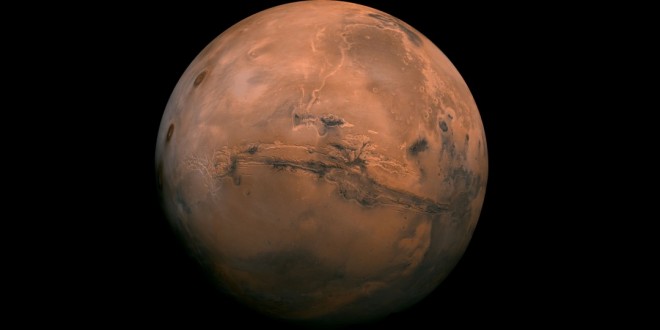NASA scientist Philip Lubin is working on a photonic propulsion system that could reduce Mars travel from six months to three days.
NASA’s concept of laser-based propulsion was revealed through NASA 360 – the space agency’s own video podcast – in a video (below, originally posted on 11 February) featuring Philip Lubin, a professor of physics at UC Santa Barbara and the mind behind the system.
According to Lubin, the use of photonic propulsion could decimate the existing best time for trips to Mars, currently standing at five months. If the laser system mooted here were to become a reality, that journey could be done in a phenomenal three days.
The three-day journey time is headline fodder, but that incredible speed could only be achieved with crafts of around 100kg. For the type of craft that carries humans, the journey would take more like a month – still an impressive feat.
The system would use large earth-based lasers bounced off craft-affixed reflective sails to propel spacecraft at near the speed of light, a far cry from the relatively lumbering efforts of today’s chemical-powered rockets.
In fact, according to Lubin, in the same amount of time as it would take the Space Launch System – the world’s most powerful rocket, currently in development – to launch, and using the same amount of energy, photonic propulsion could get a spacecraft to 30pc of the speed of light.
The system also provides the potential for interstellar travel. Though we would not have the capacity to send humans on these interstellar missions, it would be feasible to send ultra-light craft that could carry out remote exploration.
Lubin’s team last year received a proof-of-concept grant from NASA, so it’s possible we may start seeing the reality of photonic propulsion sooner rather than later.
We only see one problem with the system. It’s all well and good propelling the craft to Mars (or further afield), but how do you get them back? Less of a problem when we’re sending robots, but could become an issue when missions become crewed.
‘A giant nose in the sky’
And straight from the annals of science-fiction comes the ESA’s ExoMars robot spacecraft, designed with one sole intention in mind: sniffing out alien life on Mars.
Very nearly literally.
The ExoMars – the result of a collaboration between the ESA and their Russian counterparts – will blast off from the Baikonur cosmodrone in Kazakhstan on 14 March, carrying a payload designed to detect methane levels on the Red Planet.
The theory behind the mission is that, as living organisms on earth produce methane, high levels of the gas on Mars could indicate the presence of life, or, at least, the former presence of life.
Using highly-sensitive spectrometers and a two-pronged approach – examining concentrations of methane at differing altitudes as well as finding concentrations on the surface – to ‘sniff out’ the gas, the equipment will map hotspots and, therefore, the areas where life is most likely to be found.
The challenge will be differentiating between methane that’s a by-product of life and methane that’s a by-product of geology.
Of course, if the methane search is a bust, the mission’s side project will still yield worthwhile results.
The launch will also include a small landing craft called Schiaparelli – named for the Italian astronomer who first mapped the Martian surface – which will drop from orbit and beam back details of its descent, providing the ESA with crucial information about landing craft on the planet’s surface.
This will be essential knowledge when the ESA progresses to the next phase of its Mars exploration – landing a robot rover on the surface two years from now.
Agencies/Canadajournal

 Canada Journal – News of the World Articles and videos to bring you the biggest Canadian news stories from across the country every day
Canada Journal – News of the World Articles and videos to bring you the biggest Canadian news stories from across the country every day

